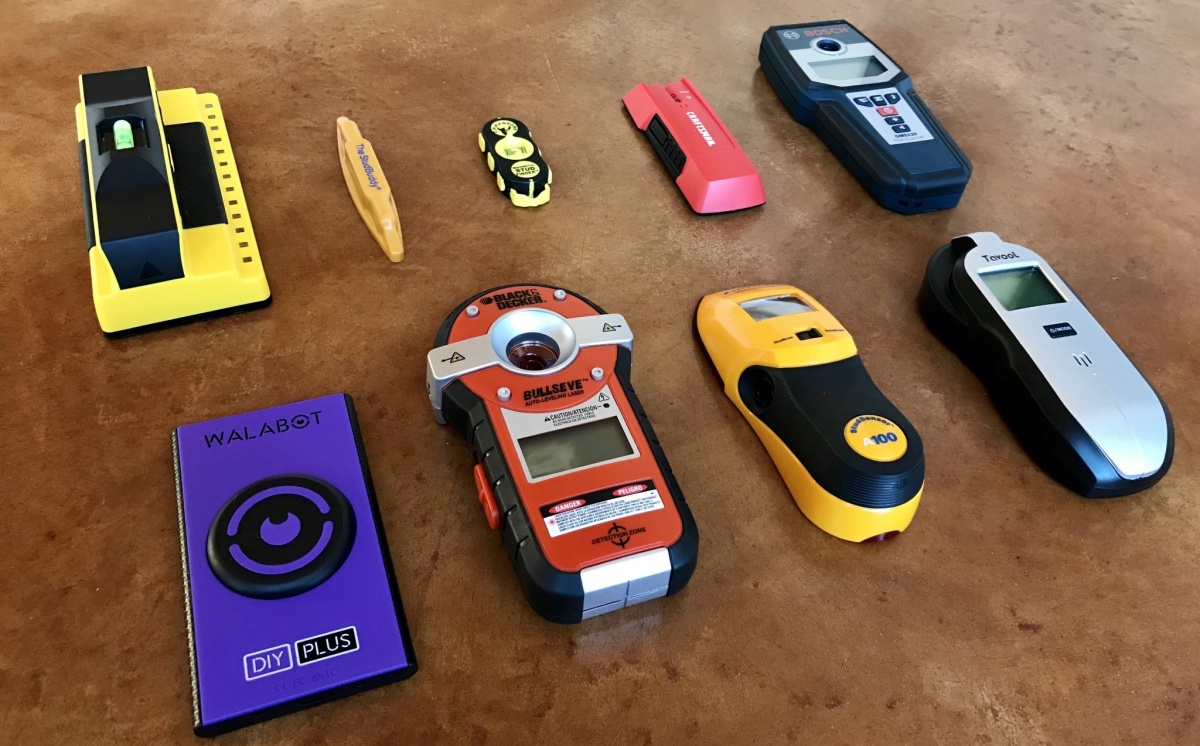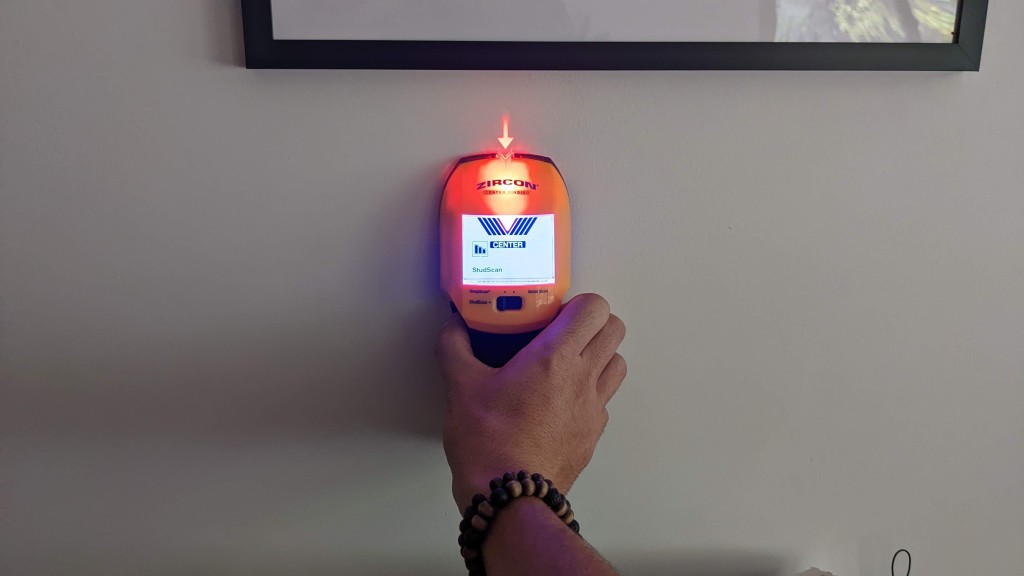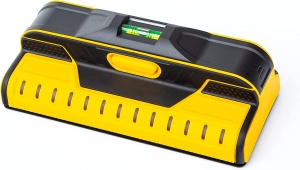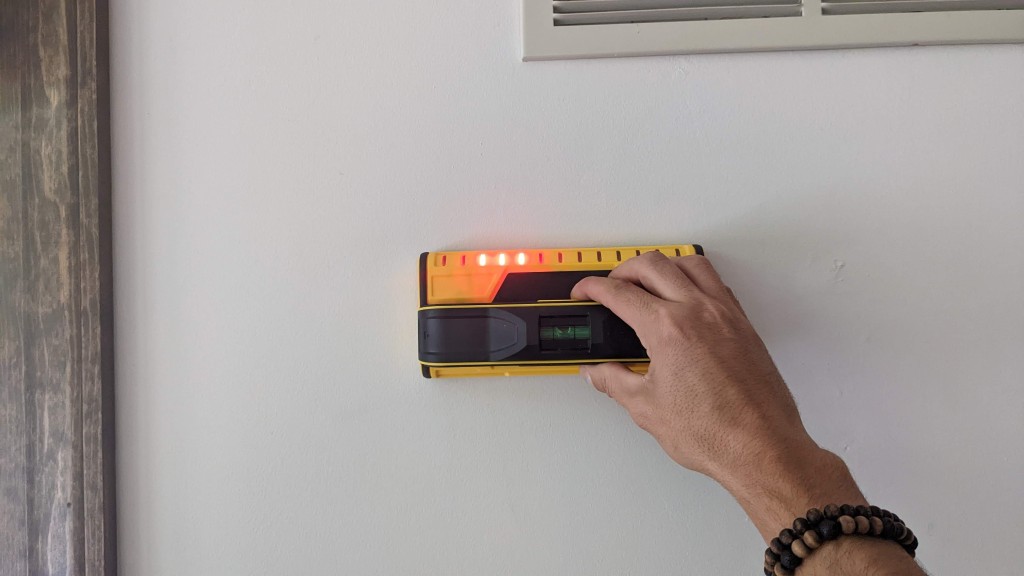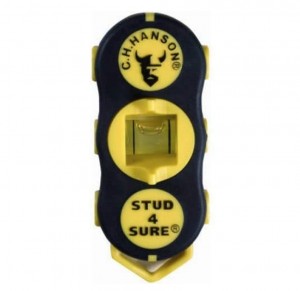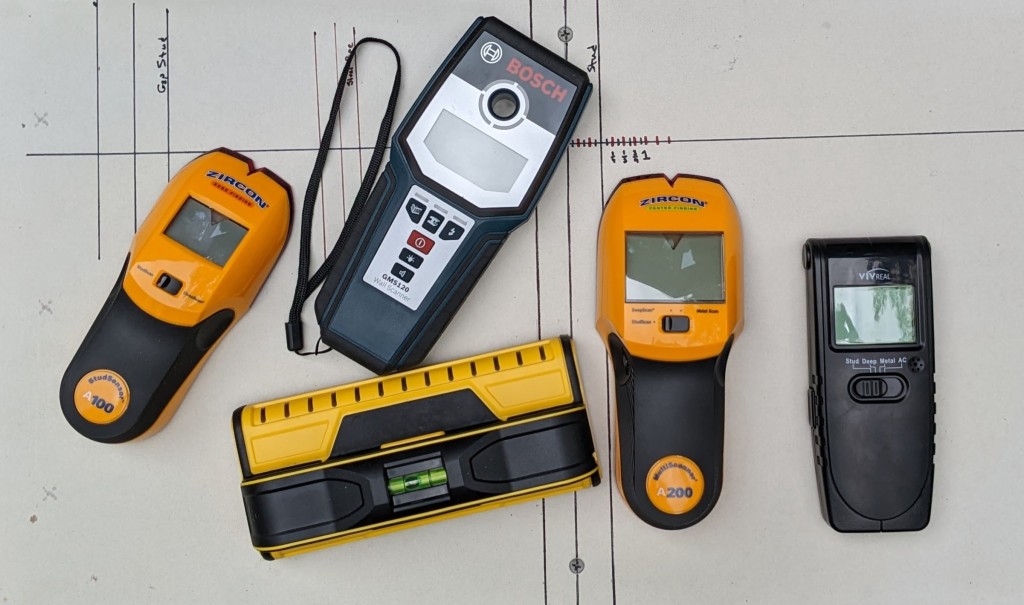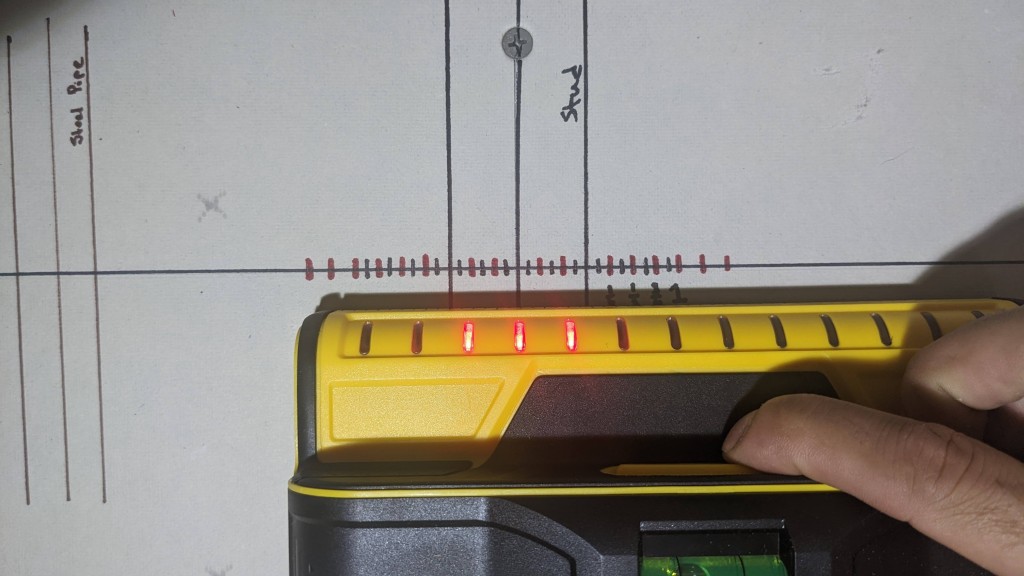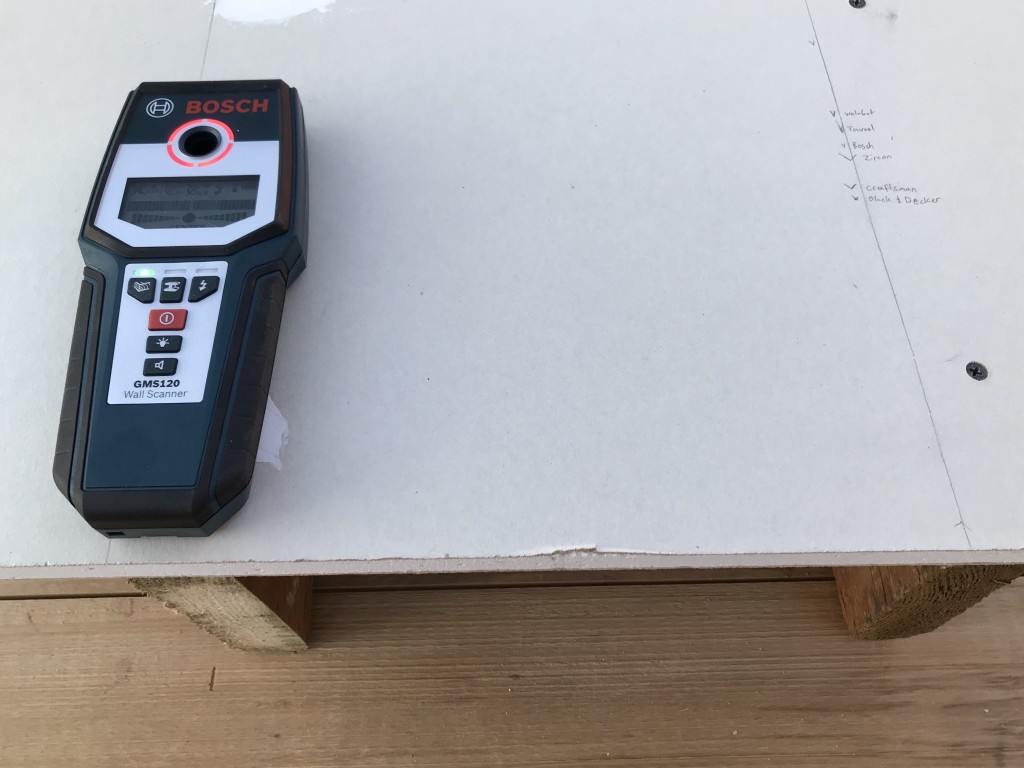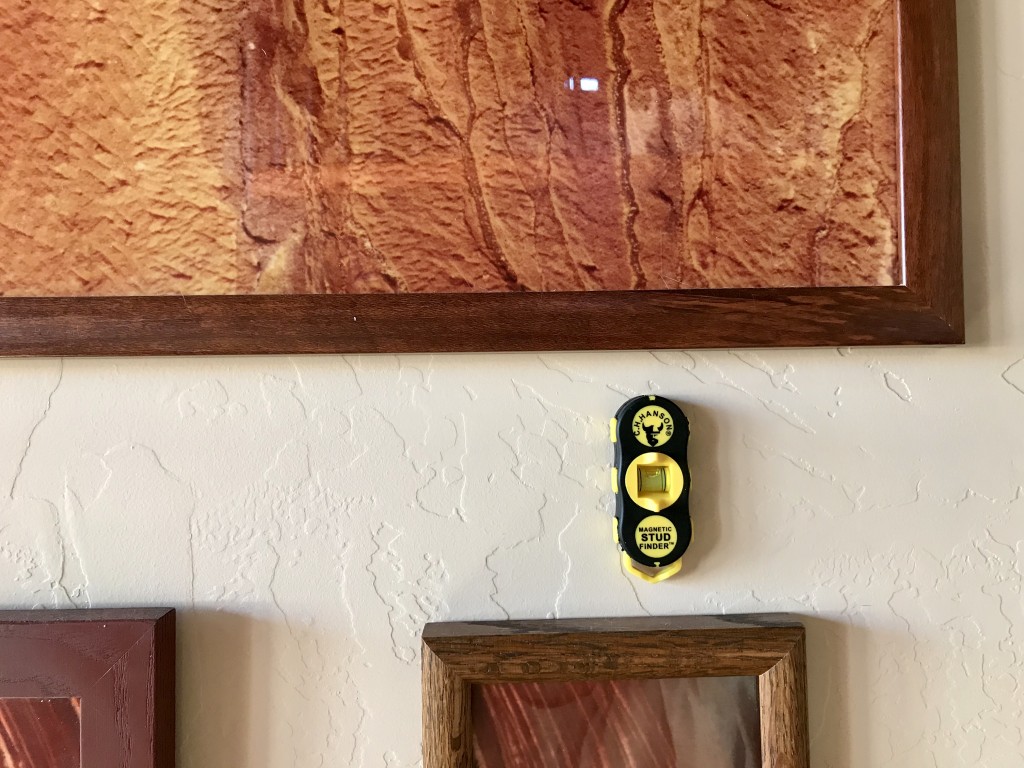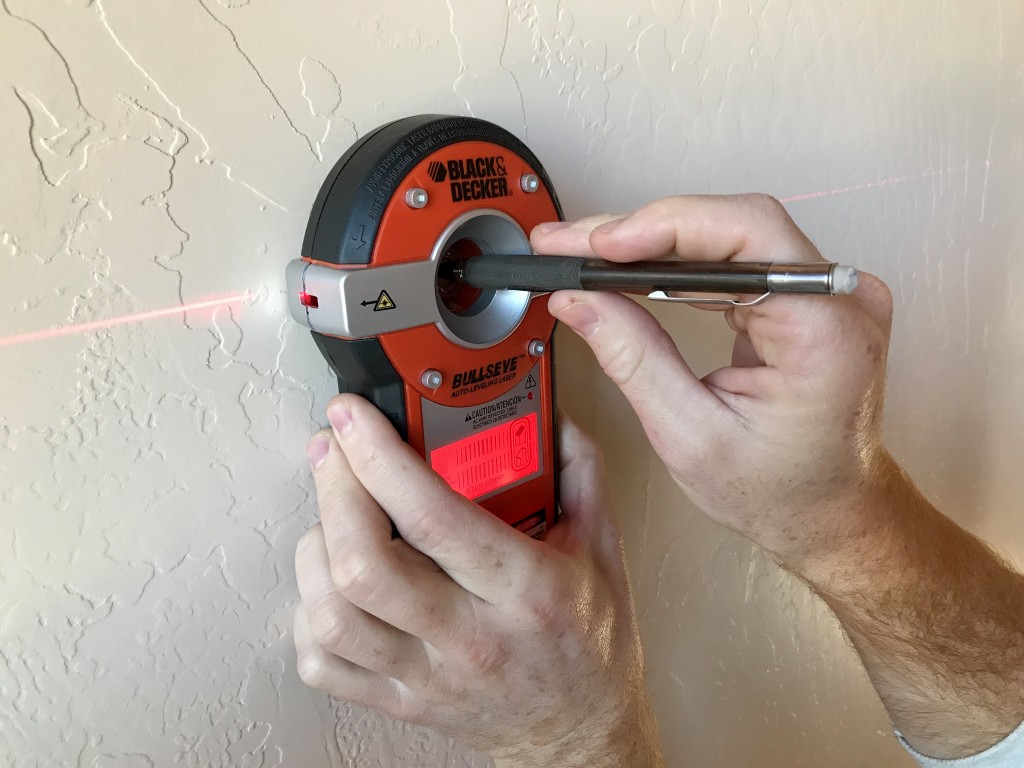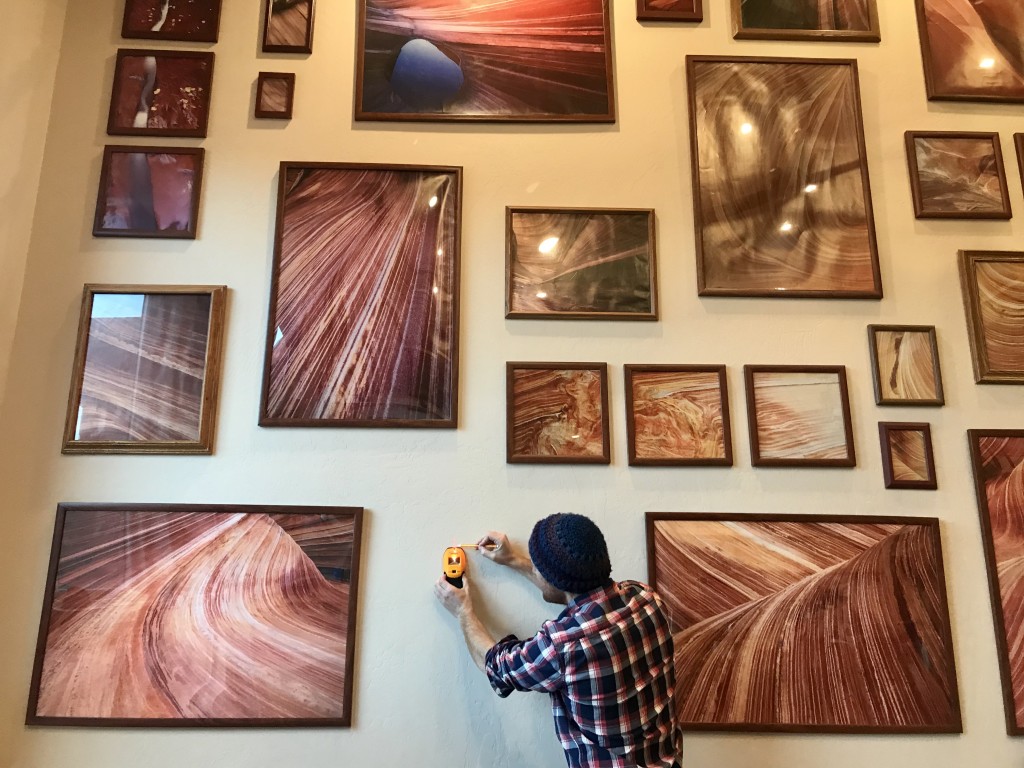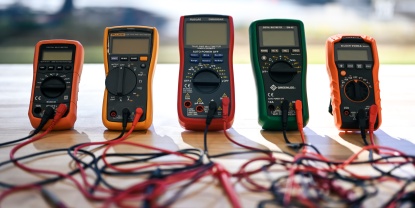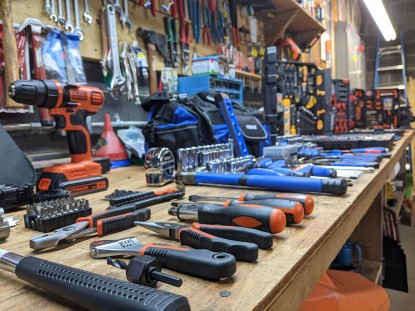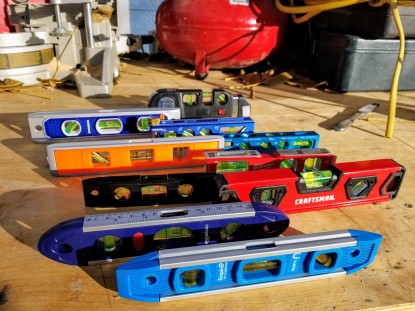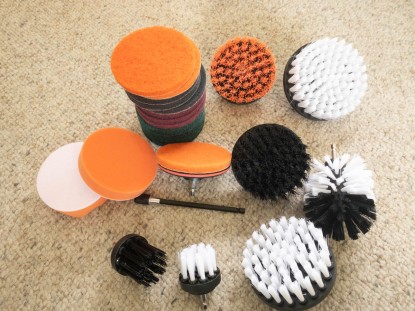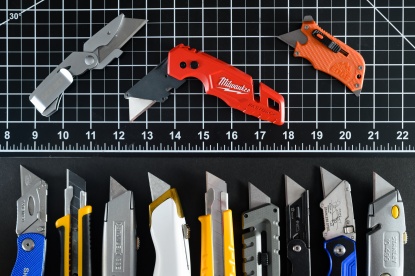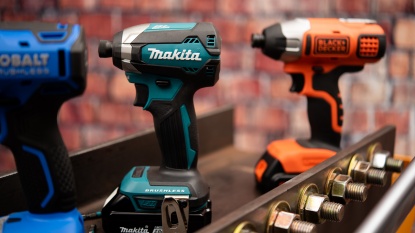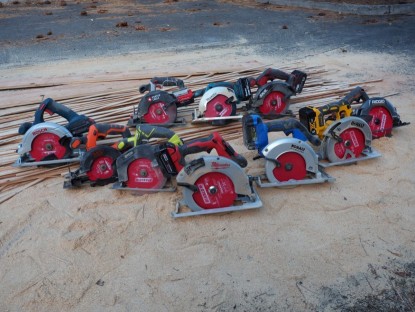Looking for studs in all the wrong places? After investigating over 28 of the best stud finders on the market, we compared the top 12 models side-by-side. We tested for accuracy, ease of use, and features, both in isolated tests as well as while working on home projects to get a feel of their real-world performance. Read on to see our detailed results and find what works best for you, whether you're hanging a mirror or remodeling your entire kitchen.
We know home projects can be fun, but they can also be stressful — and after the fifth trip to the hardware store, the last thing you want to worry about is comparing all the competing products on the market. Our tool reviews can help suss out the differences between the best drills, the best cordless circular saws, the best impact drivers, and more. If your projects span both inside and outside the house, we've also tested a wide variety of outdoor and lawn care tools like the best pressure washers, best leaf blowers, and the best string trimmers to find which offer the top performances.| Awards | |||||
|---|---|---|---|---|---|
| Price | $100 List $97.46 at Amazon | $60 List $54.98 at Amazon | $98 List $55.01 at Amazon | $49 List $52.99 at Amazon | $60 List $54.95 at Amazon |
Overall Score  |
|||||
| Star Rating | |||||
| Pros | Finds stud centers within 1/16th inch, detects metal objects accurately, comprehensive tool yet easy to use | Incredibly intuitive and simple design, display shows the entire stud, includes a level and flat edge ruler for marking | Laser level is convenient and works with textured drywall, pinpoint bullseye spot ensures accurate mark | Illuminated marking arrow, deep marking notch, fast and accurate center marking | Unique display shows entire stud, extremely intuitive |
| Cons | Requires three passes for accurate scanning, bulky | No metal or AC modes | Bulky, sometimes takes a few passes to find the edge | Large, inconsistent edge marking | Lacks many features, bulky & not ergonomic |
| Bottom Line | This favored model is easy to use, accurate, and detects multiple types of hidden materials | A twist on other models that yields an easy and accurate experience that left our testers reaching for this on their own home projects | The laser level on this stud detector makes it one convenient tool | For fast, accurate, no-fuss stud finding look no further | A handy option if you like the ability to view the entire stud at once |
| Rating Categories | Bosch GMS120 Digita... | Franklin Sensors Pr... | Black + Decker Bull... | Zircon MultiScanner... | Franklin Sensors Pr... |
| Accuracy (40%) | |||||
| Ease of Use (40%) | |||||
| Features (20%) | |||||
| Specs | Bosch GMS120 Digita... | Franklin Sensors Pr... | Black + Decker Bull... | Zircon MultiScanner... | Franklin Sensors Pr... |
| Dimensions | W: 5.9" H: 9.9" D: 2.0" |
W: 7.0" H: 3.0" D: 2.0" |
W: 8.0" H: 10" D: 2.0" |
W: 3.3" H: 7.8" D: 2.8" |
W: 3.5" H: 7.5" D: 2.0" |
| Scanning Depth (wood) | 1.5" | 1.7" | 0.8" | 1.5" | 1.5" |
| What materials can it identify? | Wood, steel/aluminum/copper, wire | Wood | Wood, metal | Wood, metal, wire | Wood |
| Power source | 9V battery | 2 AA batteries | 2 AA batteries | 9V battery | 2 AA batteries |
| Marking Guide | Yes | No | Yes | Yes | No |
| Edge Sensor | No | Yes | Yes | Yes | No |
Best Overall Stud Finder
Bosch GMS120 Digital Multi-Scanner
The Bosch Digital Multi-Scanner GMS120 is a powerhouse of a wall scanner. It has three modes; wood, metal, and electrical power, and is quite accurate with all three. In addition to the three scan modes, the Bosch has a center finder for studs, a magnetic sensor to show screws and other metal, and a ring that changes color depending on how close you are to the material you're seeking. The light-up ring changes from green (no stud sensed), to yellow (close), to red (directly on top of a stud). The ring is also hollow, allowing accurate marks right in the center of the sensor. For bonus points, the ring is wide enough to accept a permanent marker if that's your writing implement of choice. We appreciated not having to hold any buttons down to use it, which was more comfortable in awkward positions, like looking for ceiling joists. We also love the light-up screen, which made it easy to use in crawl spaces or other dimly lit areas.
On the downside, we wish the stud finder was a little smaller; as it is, it's rather bulky and takes up most of the pocket on a tool belt. Its accuracy is admirable, but it takes three passes of an object to detect its location accurately. Without the multiple passes, it can be off enough to miss the stud completely. Despite its bulk and learning curve, the Bosch GMS120 is accurate, easy to read, and multi-purpose. For these reasons, it's our favorite all-around model we tested.
Best Bang for Your Buck
Zircon MultiScanner A200
The Zircon MultiScanner A200 is an excellent tool that is easy to use, accurate, and won't break the bank. The A200 has modes to detect wood, metal, and live wires, as well as a deep scan mode for penetrating thick walls. Its center marking was dead center in our tests, and though the edge sensing was off by a little, it erred on the inside so you'll still hit your stud. Thanks to its large illuminated screen, marking notch, and illuminated arrow that's projected onto the wall, using the Zircon in the field was easy even in dark or awkward positions.
We found the metal and AC modes worked well enough, but the stud finder tended to pick up on both from several inches away. If you need to locate metal accurately, you can recalibrate the device overtop of metal objects to decrease sensitivity and more accurately mark metal objects. The ergonomic shape is comfortable to hold with your right hand, but it's less than ideal for your left. And yet, it's still easy to use and mark accurately either way. Despite its flaws, the Zircon A200 is well suited for most home projects while keeping costs (and learning curves) down.
Most Intuitive Stud Finder
Franklin Sensors ProSensor T13
The Franklin Sensors ProSensor T13 proved to be reliable and accurate in our tests, as well as one of the easiest to use. Instead of a screen that lights up when over a stud or stud edge, the ProSensor has a bar of lights that shine when directly over a stud or object. To avoid near misses, the lights always err on the inside of a stud. We loved that it shows the entire stud as well as the center marking in a single view, which could help when there are nonstandard-sized studs behind the sheetrock. It also has a level, a ruler, and a straightedge to make accurate marks on the wall. Of all the stud finders that we tested, this was the one we went back to after testing was over to complete our home projects.
As much as we like the display and straightedge, its design requires you to pinch the device while holding the power button. Unlike most other products in this review, the ProSensor T13 is oriented horizontally; some testers found it awkward to hold at odd angles, such as on a ladder when locating ceiling joists. It also lacks AC power and metal identification, though it does detect those objects. Despite those drawbacks, we believe the ease of use and accuracy of the Franklin T13 makes it an excellent choice.
Best Option With a Laser Level
Black + Decker BullsEye Auto Leveling Laser
The Black+Decker Bullseye is a simple tool, but it does have a few great features that help with many projects that require a stud finder. First, the name comes from the large circle on top where there's a hole just big enough for a pencil tip to mark the wall, ensuring accurate marks every time. There's also a live wire detection feature in the form of a small red light. Where it really shines, though, is the laser level. We found this feature incredibly helpful when hanging multiple picture frames, allowing us to line up nails and hangers with precision across a room. The laser is broad enough to work on textured sheetrock as well, which not every laser level is.
The Black+Decker is rather bulky, so using it can be a little cumbersome. Additionally, it doesn't have a sensitive sensor, forcing us to drag it across the wall slower than other contenders we tested. But it was our favorite for hanging a bunch of picture frames, and we recommend it to those looking for a stud finder and a level in one handy tool.
Best Magnetic Stud Finder
C.H. Hanson 03040 Magnetic Stud Finder
Despite the various technological advancements of density scanning that many wall scanners use, there is nothing more reliable than a magnet finding a screw holding the sheetrock to the stud. That's why the C.H. Hanson 03040 Magnetic Stud Finder is great. Magnets don't get false readings, nor do they have a hard time differentiating between different materials; either it is steel or it isn't. Magnets work great with sheetrock and even better with plaster and lathe walls, as many older buildings have. The C.H. Hanson model also comes with a level, which allows you to ensure its point on the bottom is facing plumb straight down.
What the C.H. Hanson offers in reliability, it lacks in additional capabilities. It will only find the screws in the studs and not the stud itself, so we were never sure if we were drilling into the center of the stud or not. Sheetrock screws are usually 12-16 inches apart, so it can take a little bit of noodling around to find two screws to ensure the line of a stud. Still, for ease of use and no false positives, the C.H. Hanson Magnetic Stud Finder is pretty handy.
Compare Products
Why You Should Trust Us
We've been searching for the best stud finders on the market since 2021, so that when you need to find a stud or pipe behind a wall, it only takes you a second. In this review, we devised and conducted over 10 individual tests on each product to evaluate and rate each tool's performance.
First, we subjected each device to a rigorous and objectively measurable series of assessments using a small test wall of sheetrock and studs to measure how accurate and sensitive each stud finder is, as well as their metal, wire, and pipe-sensing abilities. Then, we used them in real-world situations to find anything that might not occur in a "lab setting". We used these products to install over 50 picture frames at home and hang bike racks in the garage to test consistency and evaluate the reliability of each. We awarded points based on the degree of accuracy across our various tests, as well as whether or not each model possessed certain features. As always, GearLab purchased these products at the retail price since we do not accept any free models from manufacturers.
Our testing of stud finders is divided across three different metrics:- Accuracy (40% of overall score weighting)
- Ease of Use (40% weighting)
- Features (20% weighting)
Our stud finder test team is comprised of veteran testers and reviewers Ethan Newman and Hale Milano. Combined, they have over two decades of construction and DIY experience in both professional and home projects. Whether it is building backcountry outhouses in Los Glaciares Parque Nacional, Argentina, or at-home climbing walls in their garage, these testers know the importance of getting it right the first time when it comes to boring holes into a wall.
Analysis and Test Results
After completing our testing and comparing notes and data, we used these results to score each product across predetermined metrics covering different aspects of the tools. The following is a breakdown of how the various models measured up in Value, Accuracy, Ease of Use, and Features.
Value
Topping the scores in both price and performance was the Bosch GMS120; with near-perfect scores in all our rating metrics, it's no surprise that with this pricey tool you'll have to pay for what you get. The Black+Decker BullsEye is just short of the Bosch in both price and performance; though the laser level is a fantastic feature, it commands a high price point for that option. Another option with premium features is the Walabot DIY, though there are less expensive options that offer good performance. At roughly half the price—and still in the same performance zone—the Franklin T13 and 710+, Zircon A200, and Tavool Wall Scanner are all excellent options that won't break the bank.
Accuracy
Every inaccurate hole we drill into a wall is a hole that has to be covered up and repainted, so accurate sensing is paramount in a decent stud finder. To evaluate accuracy, we looked at edge detection, center detection, and depth detection (in case you have thicker walls).
We tested accuracy by building a small simulated test wall with a 2-foot by 2-foot piece of 1/2-inch sheetrock, with 2x4 lumber as studs. We mounted the studs behind the sheetrock and marked the edges and center on the face so we could precisely test our tools. We also simulated steel studs with 1/8 inch steel and a copper pipe section to test for nonferrous metal sensing. AC power sensing was field-tested around light switches and outlets.
For overall accuracy, the Bosch GMS120, Black+Decker Line Laser, Zircon A200, Tavool Wall Scanner, and Franklin T13 topped our scoring charts.
When we look at the breakdown across the different accuracy tests, what the GMS120 lacked in edge detection, it more than made up for in center detection — its automatic center finder was spot on in our tests. The Black+Decker detected both edges and stud centers within 1/16th of an inch, along with the Tavool, although the latter had a complex learning curve and required a very slow scan for accuracy. The Franklin T13 was slightly less accurate, sensing stud edges and centers within 1/8th of an inch, although it detects both in a single view and errs on the inside of the edge to guarantee you'll hit your mark. The Zircon A200 was more accurate than its sister model, finding stud centers within 1/8th inch after a single scan, but lacked the ability to consistently detect stud edges to the same degree.
The StudBuddy and C.H. Hanson were accurate, but in a different way. Because they are just strong magnets, they are attracted to the steel drywall screws that hold the sheetrock to the studs. They also find steel pipes and studs, but those tend to be somewhat less common in most walls. They will not, however, detect copper or aluminum pipes and studs.
Ease of Use
Often, the place that is easiest to drill or nail and the ideal spot to drill are not the same. Whether on the ceiling, high on a ladder, or over inconvenient obstacles, having a device that is easy to use no matter the situation is very helpful. Ideally, we could also take a device and hand it to any DIY accomplice, and they could understand its functions without explanation. Our ease of use metric included tests on whether the tool could be easily used one-handed, the level of difficulty for marking on the wall and ceiling, how easy it was to understand how to use the tool, and the quality of instructions included with the device. Points were deducted if the unit needed a power button to remain pressed on, if it lacked a physical marking guide or was not easily ambidextrous, if it required multiple scans or calibration, and if the instruction guide was successful in helping us achieve our desired results.
Our testers found that the easiest to use was the Franklin Sensors ProSensor T13. It was intuitive, user-friendly, and didn't require any calibration or multiple scans to accurately pick up studs. Moreso, its unique display left no question about where a stud was or was not. After this pack leader, there were five devices all tied for our second-place score, but with unique strengths and weaknesses based on their design. The Bosch GMS120 had a steep learning curve, and we had to read the instructions several times in order to get accurate results, but we liked that the device required no calibration. We really liked that we didn't have to hold down the button to keep sensing (a feature the Tavool also has), and the functions were easy to understand. The marking guide was also nice and fit every kind of writing implement we used.
The Zircon A200, on the other hand, did not have nearly as steep of a learning curve, despite the fact that it packed in all the same features as the high-end models and had instructions on how to refine our scans for more accurate results as needed. The A200's drawbacks were its size and power button placement; it was awkward when using your left hand and needed to be held down while scanning. The A200 did require calibration, though only needed one pass for accurate scans. We loved the projected arrow opposite of the marking guide, which allowed for precise marks, especially in cramped or dark areas. Also in the top five for ease of use were other models of the Franklin and the Zircon, the Pro 710+ and A100, respectively.
The Studbuddy and the C.H. Hanson magnetic stud finders were easy to use, mainly because they lacked any buttons or electronics. All the instructions say to do is slide the device around the wall in an "S" pattern until we felt the pull of the magnetism. Sure enough, it worked.
Features
While a wall scanner primarily finds studs, having a tool that can detect other things behind drywall can be quite handy and prevent some seriously unfortunate mishaps. Some of the models we tested came with analog features like levels and straight edges, as well as more advanced tools like AC power sensing, magnetic sensors to detect steel studs and screws, and pipe detection abilities. The more and better features the product had, the higher it scored.
We really liked the features on the Bosch wall scanner, and we found them to be intuitive and accurate. Not only would it detect what it was scanning for when directly over the material, but a light-up ring indicated that it was close to something via a green-yellow-red system that was easy to understand.
The Walabot also does a good job of showing what's behind the wall, whether it's pipe, wires, or studs. By far, the most innovative feature of any of the models we tested was its motion-sensing mode, which enables you to sense and locate movement behind walls. However, because the device rests further from the wall, it's hard to mark stud edges accurately.
Although many of the models come with a level on them, we found the laser level of the Black+Decker Bullseye to be really handy in certain situations. We used it to line up picture frames across a broad wall, making it much shorter work than using a spirit level or tape measure.
The level on both of the Franklin models was also useful paired with its straight edges and measurement markings. The T13 even has a pencil caddy that's very ergonomic, in case you can't reach your other writing tool for a quick mark.
Conclusion
Whether you're redoing your kitchen or hanging a picture frame in your home, stud finders can be a key tool in your DIY arsenal. Detecting what's behind your sheetrock can save you work and time and could help avoid dangerous mistakes. We aim to objectively evaluate the options out there, both by using them in real-world situations and by devising specific tests. We hope this review helped you find the stud finder for your needs, applications, and budget.
— Hale Milano & Ethan Newman


